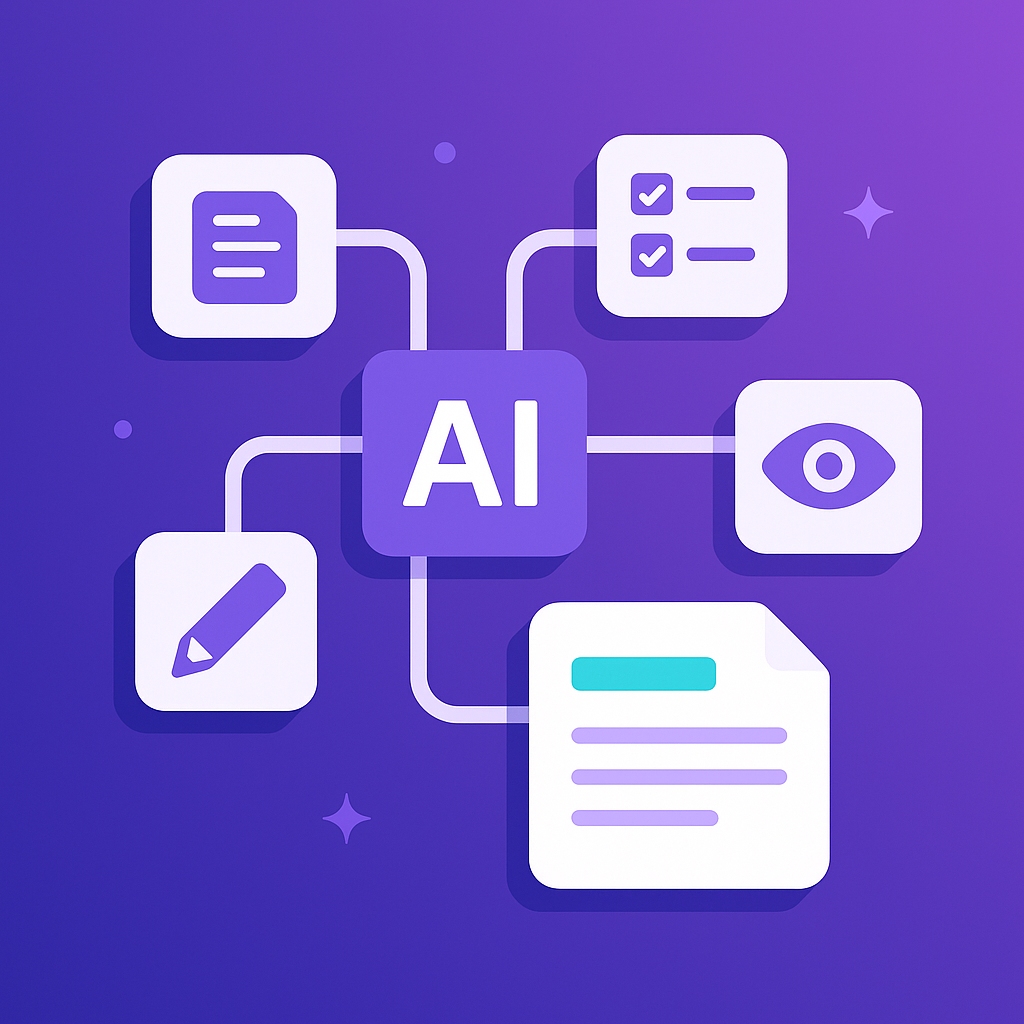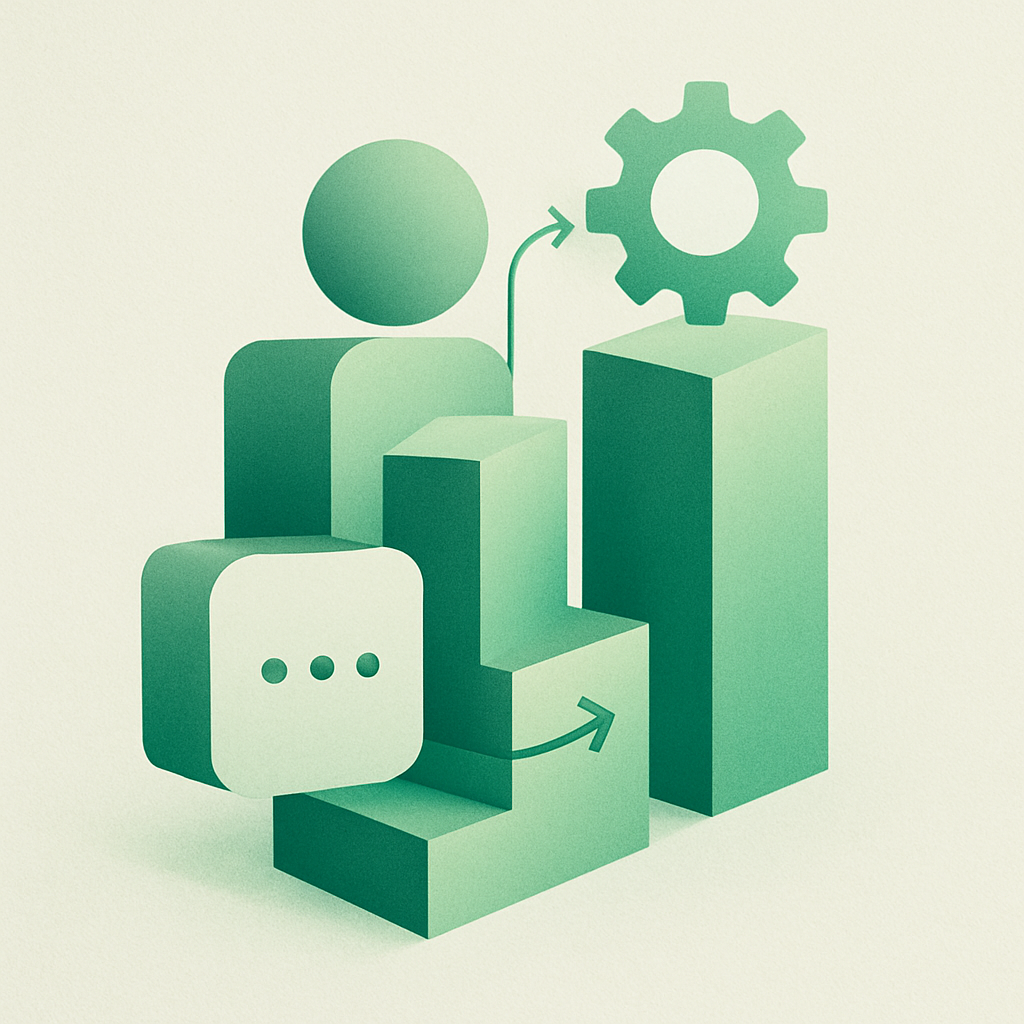How to Build an AI Agent Team to Automate Documents
Introduction
In 2025, businesses are starting to realize that one AI assistant isn’t enough to handle complex workflows like RFP responses or document automation, according to Gartner, 80 % of enterprise employees will use generative AI daily by 2026, but most organizations still rely on single, monolithic tools that quickly hit their limits.
Here’s the truth, real business work isn’t one task, it’s a mix of data gathering, drafting, formatting, reviewing, all across teams and tools. Trying to force one “super AI” to do everything leads to inconsistent results and lost control.
This is where agentic AI shines, instead of one generalist model, you assemble a team of AI agents, each designed to do exactly one thing well. It’s like having a dedicated researcher, writer, editor, and manager, synchronizing to produce polished outputs.
In this article, we’ll explore what it truly means to build an AI agent team, why task-based agents outperform role-based approaches, and how this framework can power diverse use cases, from RFP response automation, to slide creation, to report generation. Feel free to go check out our recent article first on why one AI agent is not enough.
Why Building AI Agent Teams Changes Everything
Imagine handling an RFP response, a 50-page deliverable requiring tailored research, custom data, compliance checks and a polished final document. Manually this takes days; with a single AI, you’re still copy-pasting, re-prompting and fixing errors.
Now picture a team of AI agents, each with a clear responsibility: one gathers data, another writes, a third reviews, a fourth formats, and a manager oversees the entire process. This modular approach drives consistency and scalability, transforming work that once took days into a matter of hours while preserving professional‑grade quality. According to AutoRFP, organizations that automate their RFP response process can reduce turnaround time by up to 50 % and improve win rates by focusing on strategic content rather than manual tasks.
Meanwhile, McKinsey reports that best-in-class companies applying automation in bid processes saw proposal times drop from three weeks to just two hours, along with a sales uplift of about 5 %.
The Shift from Roles to Tasks
The real strength of AI agent teams lies in task-based design, instead of creating a single, catch-all “Content Creator Agent,” the work is broken down into smaller, actionable units.
This approach makes each step easier to debug and optimize, ensures consistently high-quality outputs, and allows you to swap or update individual agents without disrupting the entire system. It’s the same way complex human projects are structured, only now, AI is running the steps with greater speed and precision.
Think of it as building with LEGO blocks rather than molding a single, unchangeable structure.
What an AI Agent Team Looks Like (and Why It Works)
A well-designed AI agent team works like an ideal project team, with each agent accountable for one part and communicating through an orchestration layer.
A Typical AI Agent Team for Document Workflows
- Manager Agent, the project lead, parses incoming tasks like “create a 20-page RFP response,” assigns subtasks, orchestrates flow, flags issues.
- Researcher Agent, the data gatherer, pulls from internal CRM, knowledge bases, vetted external sources.
- Writer Agent, the drafter, crafts structured drafts with brand tone.
- Editor/Formatter Agent, the finisher, corrects errors, aligns compliance, applies templates.
- Verifier Agent (Optional), the fact-checker, cross-references claims for accuracy, crucial for legal or regulated content.
This task-based design is not just effective, it’s auditable and scalable. If you need more capacity, you can run parallel agents for different sections of a document or add new agents for specialized tasks like data visualization or compliance validation.
Orchestration, The Secret Sauce Behind Agentic AI
Without coordination, agents fall apart. Enter the orchestration layer, it’s like the conductor in an orchestra, directing each agent, ensuring correct sequencing, data handoff, and error handling.
For Example
- Manager starts when a new RFP arrives,
- Researcher gathers info and passes to writer,
- After drafting, the Editor waits for the writer's signal,
- If missing info is found, it loops back to researcher,
- Once approved, Manager bundles and submits the final document.
Thinkeo’s orchestration framework is built for this, enabling AI doc generation workflows with reliable dependencies and review loops.
Start Small and Scale Fast
You don’t need 10 agents day one. Experts recommend starting with 2–4 agents focused on one high-impact use case:
A 4-Step Approach
- Choose one repetitive workflow (e.g., RFP responses),
- Build core agents, Researcher → Writer → Editor (+ Manager),
- Run pilot workflows, iterate, refine,
- Scale to more documents like proposals, contracts, compliance forms.
This lean rollout avoids overwhelm and delivers quick ROI.
Use Cases Beyond RFPs
While RFP automation is one of the most obvious wins, AI agent teams can streamline many other document-heavy workflows:
- Proposal & Bid Documents – Faster, consistent, and more personalized bids.
- Compliance & Legal Reports – Automated checks against regulations, with human-in-the-loop verification.
- Marketing Collateral – Slide decks, whitepapers, and case studies that stay on-brand.
- HR & Onboarding Documents – Generating offer letters, contracts, and training materials.
- Financial Reports & Analysis – Compiling data-driven summaries, charts, and forecasts.
Each of these workflows benefits from a task-based AI team because of the need for accuracy, formatting, and contextual understanding, something a single AI tool often fails to deliver.
Conclusion
Building an AI agent team is more than technology; it's reimagining workflows as modular, orchestrated, quality-driven systems. By dividing processes into tasks, orchestrating agents, embedding review loops, and enforcing guardrails, you create scalable workflows that can automate documents and power different use cases such as, RFP generation.
Thinkeo’s platform lets you build you own team of AI agents, so you can launch confidently, starting small and scaling fast.
FAQ
1. What is an AI agent team?
An AI agent team is a group of specialized AI models, each responsible for a single task within a larger workflow. Instead of one all-in-one AI trying to handle everything, research, writing, editing, each agent focuses on its area of expertise and works together under an orchestration framework. This approach improves accuracy, quality, and efficiency compared to traditional AI tools.
2. Why not just use one powerful AI assistant?
A single AI assistant often struggles with context retention, consistency, and quality across long, multi-step processes like RFP responses or contract creation. By splitting the work into task-based agents, businesses can:
- Debug easily (fixing one step instead of retraining the whole AI).
- Ensure higher quality (specialized outputs).
- Scale faster (add or update individual agents as needed).
This modularity is similar to how human teams operate, specialization leads to better results.
3. How does Thinkeo’s platform help?
Thinkeo is not just an AI assistant, not a RAG, and not a simple AI layer added to existing software. Thinkeo is an agentic infrastructure, purpose-built to handle complex documents by combining multiple specialized AIs, merging data from diverse sources, and producing long-form, structured, and coherent outputs.
With Thinkeo, you can:
- Build your own team of AI agents, each focused on a specific task such as drafting, verifying, or analyzing.
- Tackle complex use cases like RFPs, technical documents, financial reports, risk analyses, or funding files.
- Customize every step to fit your workflows, data, and internal rules, creating a system that other AI solutions simply can’t match.
4. What are the top use cases for AI agent teams?
While RFP automation is one of the top applications, AI agent teams can also be applied to:
- Proposal and sales enablement documents
- Marketing collateral (whitepapers, slide decks)
- Compliance and legal reports
- Financial data summaries
- HR onboarding and contract automation
Essentially, any document-heavy workflow can be optimized by breaking it into specialized tasks handled by AI agents.
5. How do I start building an AI agent team?
Experts recommend a phased approach:
- Identify one high-impact workflow (e.g., RFP responses).
- Build 2–4 core agents (Researcher → Writer → Editor → Manager).
- Test with pilot projects and refine based on performance.
- Scale by adding new agents for complex tasks (compliance checks, design formatting, data visualization).
6. Can AI agent teams work with human teams?
Absolutely. Human-in-the-loop workflows are crucial, especially for compliance or creative tasks. AI agents handle the heavy lifting, data gathering, first drafts, formatting, while humans review, refine, and make strategic decisions. This hybrid approach reduces workload while maintaining quality and oversight.
7. Are AI agent teams secure for sensitive documents?
Security is a top priority for platforms like Thinkeo. Most modern agentic AI platforms use enterprise-grade encryption, access controls, and audit trails to ensure data security. You can also design agents that only access approved internal sources, reducing exposure to external risks.
Next Step: Build Your First AI Agent Team with Thinkeo
If you’re ready to move beyond single AI assistants and into scalable, task-based document automation, Thinkeo’s platform provides everything you need, from agent orchestration to workflow templates, to get started quickly and confidently.





.png)